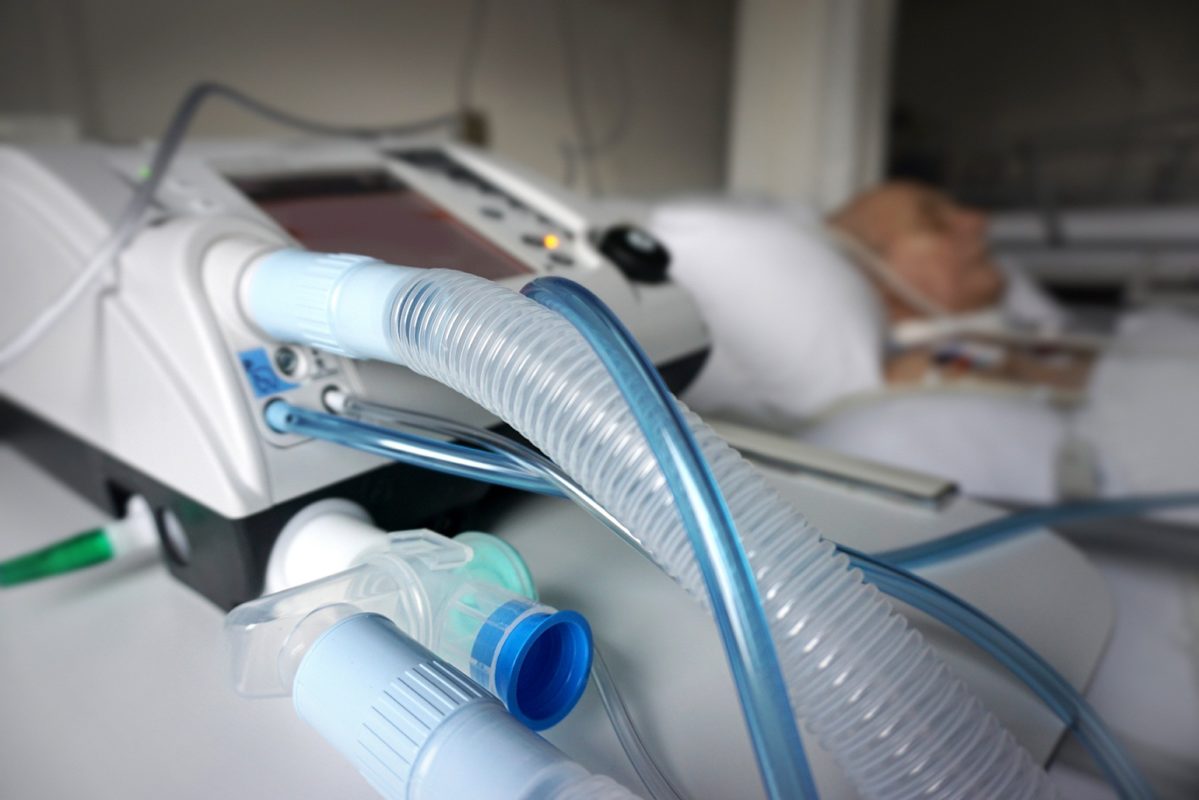Vaccination and Drugs
“Iron Lungs” Still Around. They’re Called Ventilators.
AN ARTICLE PUBLISHED BY MARCO CÁCERES AND THE NATIONAL VACCINE INFORMATION CENTER.
One of the most common lines of argument offered by vaccine apologists as “proof” of how effective mass vaccination programs were in vanquishing polio is to argue that there are no “iron lung” machines anymore. The logic goes something like this: “Do you see anymore iron lungs anywhere? No, right? Well, that’s because, thanks to vaccines, we eradicated polio from this country. No more polio, ergo no need for iron lungs.”
In his article “Why Are ‘Anti-Vaxxers’ Even a Thing?” retired pediatric cardiologist Deane Waldman, MD wrote:
Medical students today are taught about polio but strictly as a historical note. There are no more iron lungs or people being crippled by the polio virus. Why? Because of mass vaccination programs and herd immunity.[1]
Most vaccine apologists who pursue this logic are not so explicit. Their argument is expressed in a more nuanced manner. The reasoning is implied. Here’s a good example by Harry Pellman, MD, a clinical professor of pediatrics at the University of California…
Many remember the 1950s and the horror of polio. Every summer in every big city in the United States, hundreds of children were paralyzed by this silent virus that killed the nerve cells in the spinal cord, causing painless, permanent paralysis. Some were so severely affected that they lived the rest of their lives on their backs in a metal tube called an iron lung. Every city had a hospital floor full of children trapped in iron lungs. The list of horrors that I have seen from illnesses that we can prevent by vaccination goes on and on.[2]
With brief historical references such as this, vaccine apologists seem to believe they provide sufficient “evidence” to demonstrate the effectiveness of vaccines, thereby eliminating any reason for anyone to doubt in the wonders of these pharmaceutical products.
An article by health reporter Jonel Aleccia in 2013 titled “60 years in an iron lung: U.S. polio survivor worries about new global threat” featured a big black and white photograph of five-year old Martha Ann Lillard in an iron lung machine in 1953. Aleccia noted that the number of people in the U.S. using iron lungs had “dwindled steadily since 1959, when more than 1,200 people in the U.S. relied on the machines that use negative air pressure to passively move air in and out of lungs weakened or paralyzed by the virus.”[3]
Aleccia ended the article by quoting Lillard, who had spent most of her life in an iron lung: “I think the word is to get your child vaccinated. Why would we let somebody have to go back through that again?”[3]
The message is clear: Vaccines saved us from polio, thus dramatically diminishing the need for those dreadful iron lungs. Although the machines benefited thousands of people who suffered from acute breathing problems, the image they conveyed was rather horrific, which had the effect of unnecessarily amplifying the fear of polio. According to one account:
They looked like the tin man to me. They looked big to me. And their heads stuck out. There was a starkness there. You lined up, you waited for your name to be called. It wasn’t a pleasant experience.[4]
What exactly were iron lungs? They were negative-pressure machines used for mechanical ventilation—essentially, respirators.5 Iron lung machines resembled small decompression tanks. People who had suffered paralysis of muscles in their lungs and were unable to breath on their own were placed in iron lungs, which provided artificial respiration until they were able to breath independently again.
Better known as the iron lung, this metal cylinder completely engulfed the patient up to the neck. A vacuum pump created negative pressure in the chamber, which resulted in expansion of the patient’s chest. This change in chest geometry reduced the intrapulmonary pressure and allowed ambient air to flow into the patient’s lungs. When the vacuum was terminated, the negative pressure applied to the chest dropped to zero, and the elastic recoil of the chest and lungs permitted passive exhalation.[5]
The first iron lungs, also known as artificial lungs or artificial-breathing machines, were widely used for mechanical ventilation and were developed by Philip Drinker and Louis Agassiz Shaw of Harvard University in 1929.[5] In 1939, the National Foundation for Infantile Paralysis in the United States began distributing irons lungs on a mass scale. The unit cost of the machines during the 1930s was approximately $1,500,[6] or more than double the cost of a new car back then.[7]
Although they have come to be popularly associated almost exclusively with polio, iron lungs were used for patients who were unable to breathe on their own due to any number of reasons, including severe pneumonia or gas asphyxiation.[8]
The narrative that iron lungs went out with the apparent taming of polio as a result of the polio vaccine developed by Jonas Salk, MD in the early-1950s is a dishonest one. As Suzanne Humphries, MD has pointed out, we still have plenty of iron lungs around, only that we now have modern versions of them called “ventilators.”[9]
Parents today think that the Salk vaccine eliminated any need for ventilators, because the pictures of all these children on iron lungs are no longer paraded in front of people in order to create fear. Besides which, today’s “iron lungs” don’t look like a prototype submarine. They are barely recognizable as today’s “ventilators.”[9]
One of the pictures to which Dr. Humphries refers is a famous one taken in an auditorium at Rancho Los Amigos National Rehabilitation Center in Downey, CA in 1953. The black and white photograph shows four rows of iron lung machines lined up side by side—a total of about 30 machines. Each machine has an adult or child in it, and there are about 10 doctors and nurses posing next to roughly every three or four machines.[6] [10] [11]
The impression one gets by looking at the photo is that that must have been what it looked like in hospitals throughout the U.S. at the time. Not true. The scene for the shot was staged for a polio information film produced for the March of Dimes campaign.[10] [11]
Two data points sometimes used to show the decline in the number of people requiring iron lungs are that in 1959 there were 1,200 people in the U.S. using the machines and that by 2004 the number had dropped to only 39.[6]
While that may be true, it doesn’t tell the whole story. According to The American Association for the Surgery of Trauma (AAST), in 2005 there were “790,257 hospitalizations involving mechanical ventilation” in the U.S. This represented “2.7 episodes of mechanical ventilation per 1000 population.” The average length of use of a ventilator by patients was just over two weeks and accounted for 7.1 percent of all hospital days.[12]
So, no, iron lungs are no longer as prevalent as they once were. But that has nothing to do with polio or the polio vaccine. It has to do with technological advancement. The modern-day equivalent of the iron lung, the ventilator, is in greater demand than ever before, at the same time that the American people are growing increasingly ill and disabled.
References:
[1] Waldman D. Why Are ‘Anti-Vaxxers’ Even a Thing? The Blaze Jan. 30, 2015.
[2] Pellman H. Letters: Alternative to early vaccination horrifies. The Orange County Register Nov. 10, 2013.
[3] Aleccia J. 60 years in an iron lung: US polio survivor worries about new global threat. NBC News Nov. 30, 2013.
[4] Seeman BT. The shot felt ’round the world. The Seattle Times Apr. 9, 2005.
[5] Byrd RP, Mosenifar Z. Mechanical Ventilation. Medscape Feb. 10, 2017.
[6] Smithsonian. The Iron Lung and Other Equipment. The National Museum of American History.
[7] The People History. 1930s Important News and Events, Key Technology Fashion and Popular Culture. ThePeopleHistory.com.
[8] Artificial Lung on Wheels Proves Life-Saver. Popular Mechanics Magazine p. 975 1930.
[9] Humphries S. Smoke, Mirrors, and the “Disappearance” Of Polio. International Medical Council on Vaccination Nov. 17, 2011.
[10] American Masters. Polio and Famous People Who Survived It. PBS.org.
[11] Polio Survivors Association. Pictures of Polio. PolioAssociation.org.
[12] The American Association for the Surgery of Trauma. Mechanical Ventilation in the Intensive Care Unit. AAST.org.











